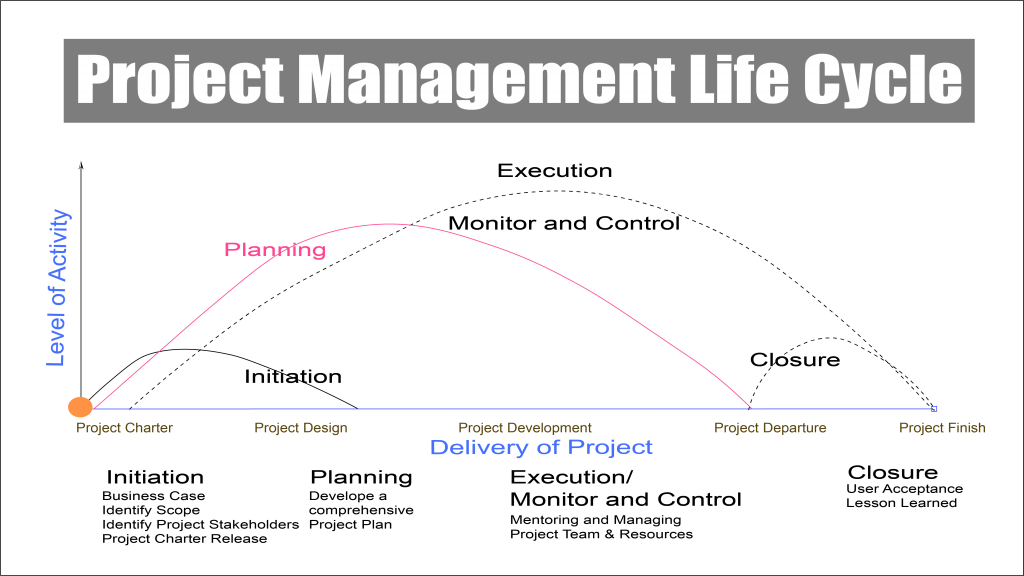Edition #2: The life cycle of a project
The phases each project invariably must navigate through
Introduction
Often when I ask people what broadly is the lifecycle of a project, they tend to have a muddled perspective of the activities that are done, sometimes going into the micro-level tasks rather than giving an over-arching and generic view.
A lifecycle, in its basic form, is a series of activities/ events/ changes that occur over a certain period of time.
Pic source: https://project.pm/project-life-cycle-vs-product-life-cycle/
In project management, we have different types of lifecycles, which we will come to a little later, but they will consist of the following phases:
Initiation
Planning
Execution
Monitor & Control
Closure
As the graph depicts the level of activity during each phase differs, and some phases are done in an iterative manner. Typically the Execution phase is the longest and goes hand-in-hand with the Monitoring and Control phase.
Over the last two decades, project delivery has gone through its own ‘evolution lifecycle’ of sorts. From the traditional Waterfall Model/ Predictive lifecycle where project phases are linear in fashion to the more popular Agile lifecycle which is a combination of Iterative and Incremental lifecycles.
This video nicely sums up the different types of lifecycles.
Video source: University of Cape Town
How to decide which lifecycle to deploy?
For the project manager, various factors determine which lifecycle to choose at the onset. For smaller projects with limited capacity, this includes non-profit organisations, being open and adopting an approach that best suits the needs of the key stakeholders and achieves the project goals will be the driving factor. For significantly larger projects in sterile and structured environments, identifying the approach is critical as there will be many moving parts and teams might be across geographical locations.
A few key factors that help decide the project lifecycle are [1]
Stability and clarity of requirements. Are they unknown or clear upfront?
Who are the end-users? Is it for internal consumption or a product for (external) clients?
Project size wrt cost, scope and time. The scale and quality of the deliverables, costs involved, and time constraints (aggressive or conservative timeline?). Any change in one of the co-ordinates of this golden triangle impacts the other aspects and thus the overall project trajectory.
Location of project teams. If geographically dispersed or all locally available.
Trivia
Regardless of the project, it is paramount that the project manager is able to keep both the short and long-term focus and drive the team accordingly. The mindset to stay ahead of the curve, be prepared for eventualities, and (re)assess/ pivot as you go along, ensures that the project progression remains under control.
Remember, nothing can go as per the original plan, stay vigilant!
Links
[1] https://www.projectsmart.co.uk/agile-project-management/which-life-cycle-is-best-for-your-project.php
[2] https://www.proofhub.com/articles/project-management-quotes
[3] https://www.instagram.com/p/Crm_Zj6umMV/
Pen and Podcast
I also write and do podcasts occasionally. Some recent ones
- Blog: Sports in India - The great leveller
- Podcast: Women and India’s sports policy: https://lnkd.in/gmaM7Snt






